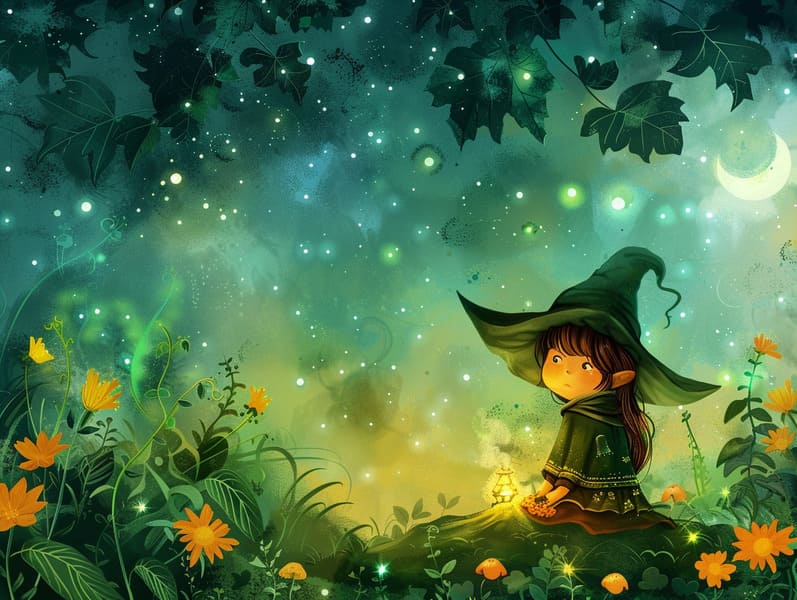
Best fairy tales have ancient roots. These stories have been transmitted from one generation to the next centuries before they were ever documented. They arose from a variety of cultures, including Middle Eastern traditions. They were initially shared among mature audiences, often carrying themes and messages reflective of the societal norms and beliefs of the time.
The Grimm brothers, Jacob and Wilhelm, were among the first to compile and publish many of these beloved tales. Their compilation, "Grimm's Fairy Tales," included stories like "Cinderella," "Little Brother and Little Sister," and "Snow White," which have since become staples in the world of beloved fairy tales. Similarly, Hans Andersen's charming narratives, such as "The Little Mermaid," and "The Duckling that Could," have touched hearts worldwide, solidifying their place in the pantheon of beloved fairy tales.
Despite their historical roots, fairy tales remain as important as ever, especially as nighttime stories for kids. These delightful tales are now available in multiple formats, including vividly illustrated books, charming animations, and digital storybooks.
Their ongoing significance can be linked to several enchanting factors:
Life Lessons: Timeless fairy tales often present important moral lessons. Fairy tales like "The Boy Who Cried Wolf" teach the importance of integrity, while "The Story of the Tortoise and the Hare" stress the qualities of steadfastness and modesty. These narratives offer kids clear distinctions between right and wrong, guiding their moral compass in a kind yet impactful way.
Compassion and Insight: Timeless fairy tales frequently include individuals facing struggles and tests, motivating young listeners to understand with their struggles and rally behind their triumphs. For instance, "Beauty and the Beast" reveals the importance of seeing beyond looks to know the inner spirit of a character, encouraging empathy and awareness.
Cultural Comprehension: Many traditional fairy tales are infused with the cultural contexts from which they blossomed. Understanding these stories can provide illuminating insights into different ways of life, encouraging a sense of world insight and comprehension.
Inventiveness and Fantasy: The fanciful elements in fairy tales—magical kingdoms—spark children’s dreaming abilities. These narratives transport readers to fantastical realms, stimulating inventive thinking and a sense of mystery that stays a lifetime.
Timeless fairy tales are not only charming but also instructive. They serve as whimsical tools in building various cognitive and emotional skills in young readers. When timeless fairy tales are spoken out loud, they boost language skills by offering new word meanings and complicated sentence structures. This practice also strengthens auditory skills and mindfulness, as young readers hang on every word, expectant to see what happens next.
Furthermore, exploring the themes and characters of old fairy tales can sharpen reasoning skills and problem-solving abilities. Young readers learn to notice patterns, forecast, and get cause and effect. These discussions also support young ones reveal their thoughts and feelings, nurturing their emotional intelligence.
In today’s online age, the existence of online fairy tales has made these stories more within reach than ever. Digital sites and applications provide huge assortments of bedtime fairy tales that can be accessed or played anytime, anywhere. Fairy tales recited are particularly prevalent, supplying an fascinating method for young ones to enjoy these spellbinding stories. Narrated books and narrated videos guide characters and settings to life, often paired with mesmerizing musical scores and songs that intensify the storytelling journey.
The timeless appeal of timeless fairy tales lies in their ability to modify to present eras while staying true to these guys their core values. Contemporary revisions of these stories often incorporate more diverse figures and modern settings, making them relevant to today’s audience. However, the main ideas of spirit, charity, and impartiality remain unchanged, continuing to touch young listeners of all ages.
Classic fairy tales also offer a sense of serenity and comprehensibility. They provide a systematic narrative with a clear beginning, middle, and end, often ending with the ending of conflicts and the triumph of good over bad. This foreseeability can be relieving for young readers, rendering a sense of dependability in an always shifting world.
Traditional fairy tales continue to entrance and guide new generations, maintaining their splendor and value in modern society. As nighttime stories for kids, they showcase a perfect blend of charm and enlightenment, fostering moral values, empathy, and creativity. The presence of free fairy tales online and the popularity of fairy tales voiced guarantee that these traditional narratives remain available to new generations.
By protecting and spreading these narratives, we continue to glorify the rich tapestry of human imagination and cultural heritage. Whether you are exploring a vividly illustrated book, exploring a electronic collection, or listening via an read-aloud story, the grandeur of traditional fairy tales is always within reach. These tales demonstrate of the unchanging impact of stories and its ability to tie us across time and space.
Be it you are exploring a gorgeously illustrated book, exploring a digital collection, or listening through an voice book, the spell of bedtime fairy tales is always within reach.
These narratives demonstrate of the unceasing force of narratives and its ability to gather us across eras and regions, weaving a spell that charms and informs alike.